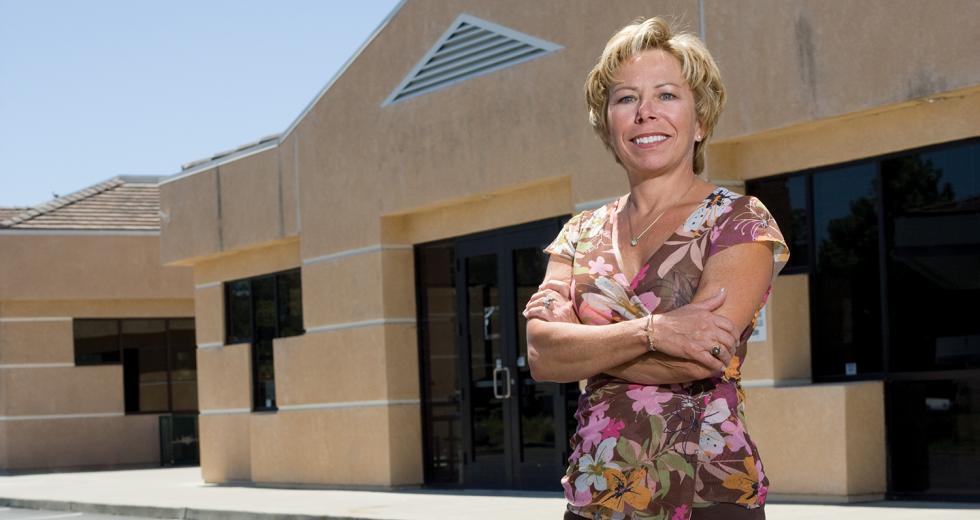A drive past a neglected home in Natomas or a shuttered Mervyn’s in Roseville is more than a sign of the strained Capital Region economy. It is also an expensive risk that can hit property owners at the knees.
Originally, vacant property insurance surfaced as home insurance for the elderly. As an aging homeowner left his or her home for increased care, the family left the property empty while they decided the next steps.
A drive past a neglected home in Natomas or a shuttered Mervyn’s in Roseville is more than a sign of the strained Capital Region economy. It is also an expensive risk that can hit property owners at the knees.
Originally, vacant property insurance surfaced as home insurance for the elderly. As an aging homeowner left his or her home for increased care, the family left the property empty while they decided the next steps.
But as more homeowners started abandoning houses due to foreclosure in summer 2007, many insurance agents bore the news that the homeowner was still liable for the residence, and standard insurance wouldn’t cover an empty building.
“Most people just don’t know they aren’t covered,” says Cathy Spencer, a broker and owner of Gateway Professional Insurance Services in Solano County. “Property owners are often shocked to realize that even though they have paid their insurance, they are no longer covered for things like fire and vandalism if the property has been vacant for a substantial amount of time.”
The grace period before the vacancy clause kicks in varies from policy to policy, but it is usually around 30 days. The fix is vacant property insurance at an oft-higher price.
The price increase depends on a number of factors. Spencer cites a client who is moving across country and leaving a house vacant while it is up for sale. The bill for the same coverage increased from $400 a year to $1,800.
Some property owners say they can’t afford the increase and will take their chances. Others are renting the property at a loss or paying people to house sit in an effort to avoid the exposure. Even then, property owners are advised to talk with an agent to ensure the right coverage.
“The important thing is to let your agent know when there are changes to the use of the property, so the agent can find the best way to protect your real estate investment,” Spencer says.
And don’t even think about lying. Insurance companies will investigate the vacancy status of the property down to the day to determine when coverage expired.
In Sacramento, Jeanne Mattes, a personal lines producer at John O. Bronson Co., estimates that she is writing as much as 30 percent more vacant property claims this year than she did five years ago.
That is still fractional compared to the number of homes going into foreclosure. According to RealtyTrac, Sacramento home foreclosures totaled 201 in June 2005 and rose to 2,241 in June 2007. Since then, active foreclosures haven’t dropped below 2,000 per month.
Often, clients leave a property, and the insurer finds out when mail is returned or when a change of address is requested. That is when Mattes informs owners of their liability exposure and advises the purchase of vacant property insurance.
“They are usually surprised that their current insurance won’t cover the home anymore and shocked when they find out the price is more than double what they were paying,” she says.
Mattes recently saw a $250,000 policy jump from $800 a year to $3,151 because the house was vacant.
Even at these rates, property owners don’t always get the coverage they need. “These policies often have a lot of limitations,” Mattes says. “Things happen to vacant homes.”
Insurers advise property owners with vacant space to shop around. Not all carriers offer the coverage, and some go in and out of the market depending on the environment.
Some homeowners try to save money by taking out a policy with a
nonadmitted carrier offering surplus lines. These carriers, such
as Boston-based Lexington Insurance Co., Nationwide Mutual
Insurance Co. subsidiary Scottsdale Insurance Co. or Lloyd’s of
London, are regulated by the California Department of Insurance
for financial stability and business practices, but they hold
licenses in other states. They usually work in the state only
when a particular risk is unusual or not available from
California-licensed carriers.
“Boarded up property has a higher level of vandalism and vulnerability to theft of copper cables and electronics; broken windows; and graffiti.”
Barry Katz, senior managing director of asset services, CB Richard Ellis
Others turn to the Internet, where the growing problem of insuring empty homes has prompted a niche industry. Companies such as VacantHomeInsuranceNow.com promote free quotes and a simple application process.
Mattes says the need for unoccupied dwelling coverage will continue. “The economy isn’t improving very fast, so it takes time to resell,” she says.
But vacancy insurance isn’t limited to homes. It’s migrating to the commercial property side. Jere Owen, principal of Owen Dunn Insurance Services, understands the pain of the vacant property insurance requirement on a personal level. When his company outgrew its 10,000-square-foot office on 29th and G streets, it moved to bigger digs across from Cal Expo. He had to purchase coverage at nearly twice the cost of what he was paying when he occupied the building. “Am I happy about it? No. But at least I am in the business, so it didn’t take me by surprise,” Owen says.
By early last year, mortgage, title and real estate companies continued to shrink their footprints, leaving more space vulnerable to vandalism. Empty homes and offices were soon followed by retail. Even large anchors such as Mervyn’s and Circuit City started closing. Industrial, too, felt the emptiness as more remote tilt ups were stripped of HVAC and inhabited by squatters. “It happened so quickly,” Spencer says.
According to CB Richard Ellis, office vacancies rose from 12.6 percent in 2005 to 16.4 percent in 2008. Retail also climbed from 4.7 percent in 2005 to 11.5 percent in the first quarter of 2009. All those dark spaces left vulnerable to vandalism and malicious acts might not have the coverage owners thought they had.
In the commercial property space, the definition of vacant can be complicated. Depending on how the coverage is written, a vacant center could mean 30 percent to 70 percent empty. The term in use can also be tricky because the property has to be used the way it was intended. Filling a retail pad with office furniture storage could still change the terms of the insurance contract. Property owners are wise to read the fine print of their policies and stay in contact with their insurance agents.
Lori Bluett, principal of Bluett & Associates Inc. and CEO of Juno Commercial Real Estate Inc., advises her clients to either purchase exclusions or renegotiate with carriers to ensure vacancy coverage. “It’s like health insurance. You never know what will happen, and you get the best rates when you don’t need the coverage right away. It can be a lot more expensive to try to buy back the coverage later.”
Bluett uses this analogy to convince commercial property owners to get full coverage upfront: “You are buying the ability to sleep at night. Why set the alarm for 2 a.m.?”
The price tag for commercial vacant property insurance can vary dramatically as each space carries different risks. Measures such as smoke detectors and security services can reduce risk and cost.
Barry Katz, senior managing director of asset services for the Western Division of CB Richard Ellis, advises clients to be proactive. “Boarded up property has a higher level of vandalism and vulnerability to theft of copper cables and electronics; broken windows; and graffiti,” he says.
CB Richard Ellis manages 1,172 buildings in California and more than 15 million square feet in the Sacramento area. Katz says staying on top of maintenance is also good for the buildings and could make it easier for property owners to sell later. “An unoccupied building is very different,” Katz says. “It is empty, but the fire system is working and being maintained. That can result in a very different insurance policy.”
Keeping Your Property Safe
Vacant commercial buildings cost more to insure than occupied
ones because of the increased exposure to losses. According to
the Institute for Business & Home Safety, here are some tips to
protect your vacant property:
Notify your alarm company of the vacancy, create new codes and update contact information. Consider hiring a patrol service, or have someone inspect the premises at different times of the day to note any changes.
Change the locks, or install new tapered deadbolts. Copies of existing keys may have been given to others, such as prior tenants. Tapered deadbolts make it almost impossible to twist the lock open with a wrench.
Suspend mail and delivery service to the building. Contact delivery companies and the U.S. Postal Service to ensure that nothing is delivered to the property.
For additional tips, visit disastersafety.org.
-J.T. Long
Recommended For You

Gateway to Growth
Redevelopment milestones in the Bridge District
On a breezy, blue-sky day in late November, West Sacramento city and regional planning officials gathered near Raley Field to celebrate the opening of Tower Bridge Gateway, a reconstructed boulevard connecting Highway 50 to Tower Bridge.

Folsom City Blueprint
A city manager plans for the future
California’s ongoing economic slump has been historically challenging to local governments, even in relatively affluent areas like Folsom, which has one of the highest per capita incomes in the Capital Region. We sat down recently with Folsom City Manager Kerry Miller to discuss the city’s current fiscal condition and plans it has to thrive as the economy improves.



